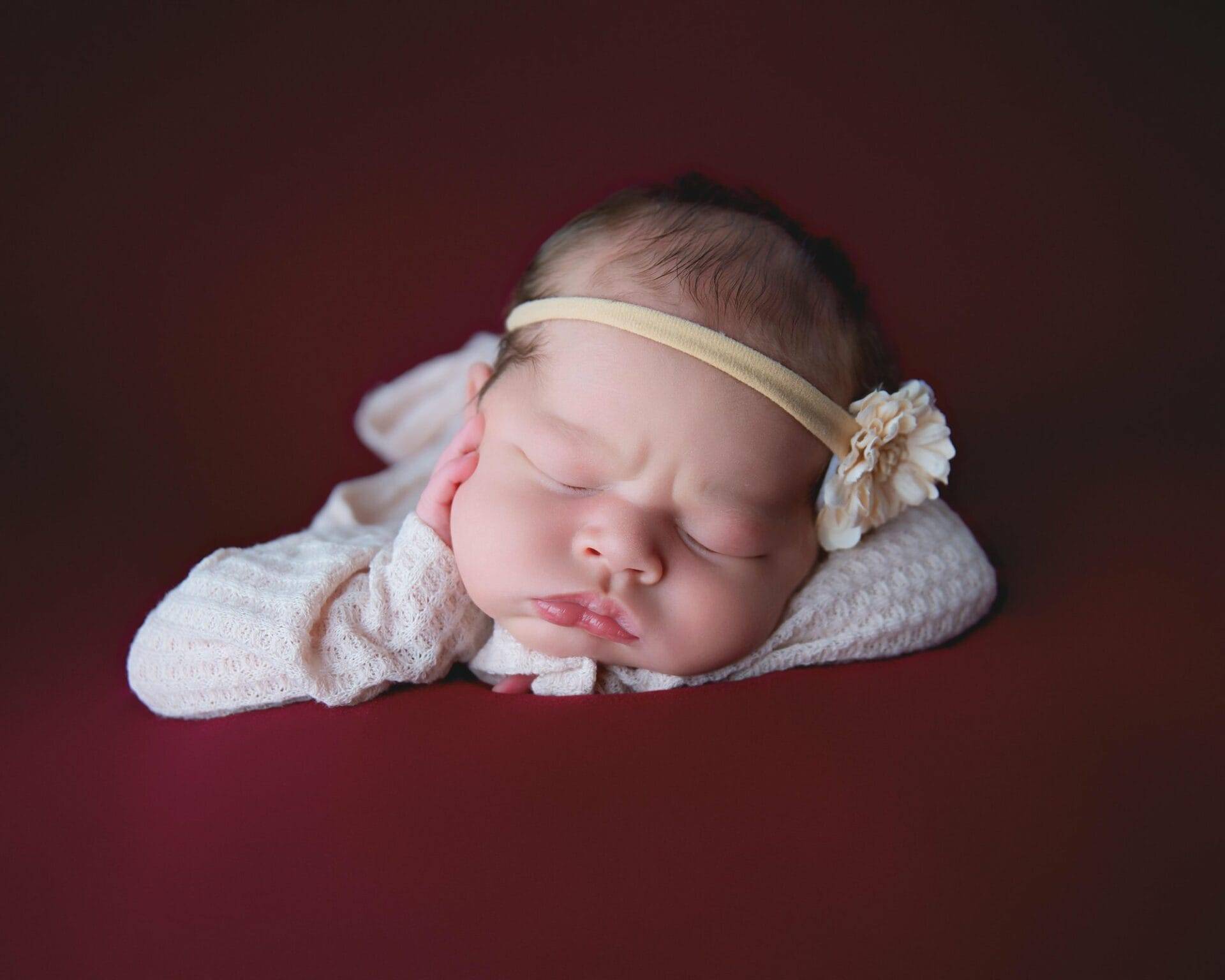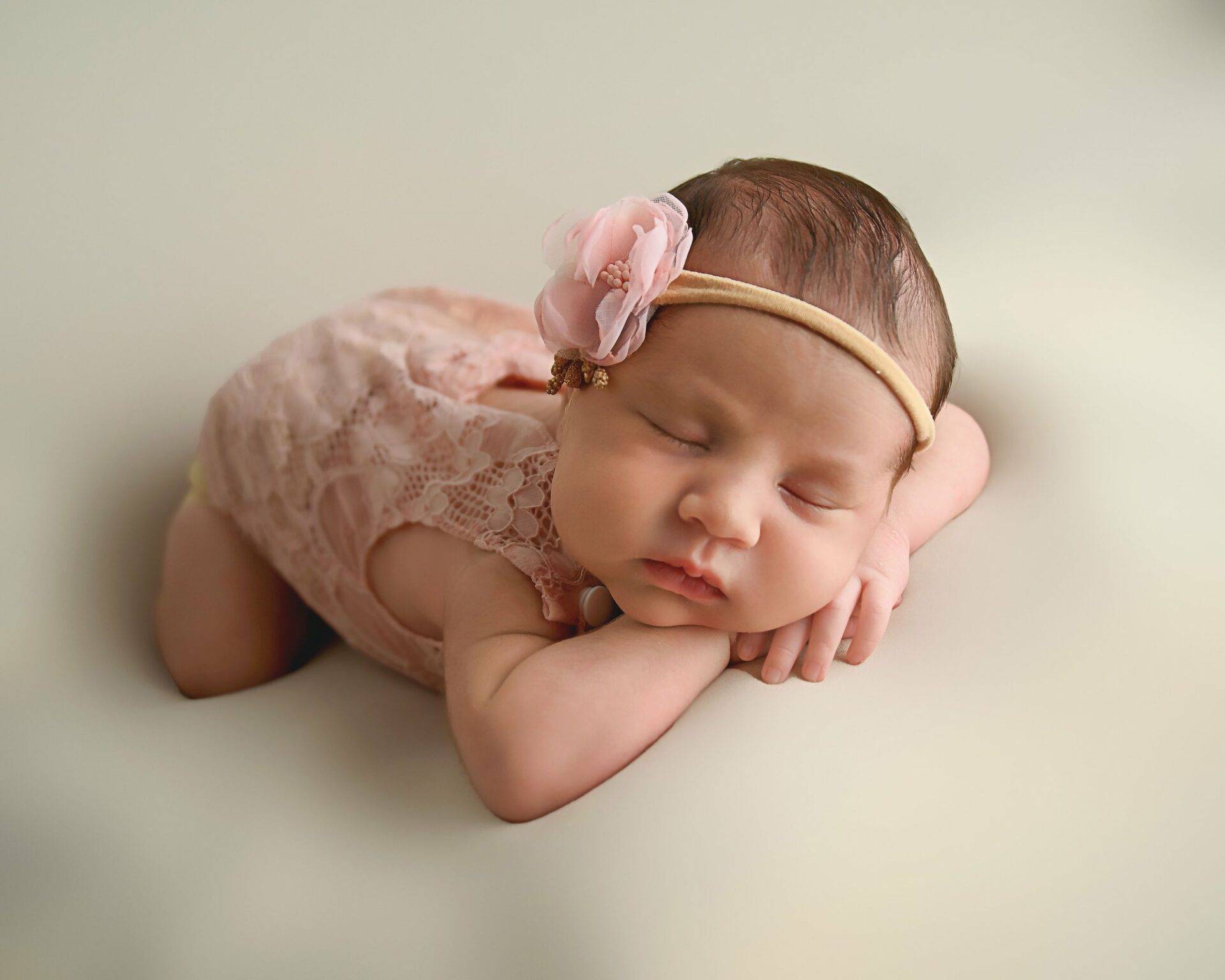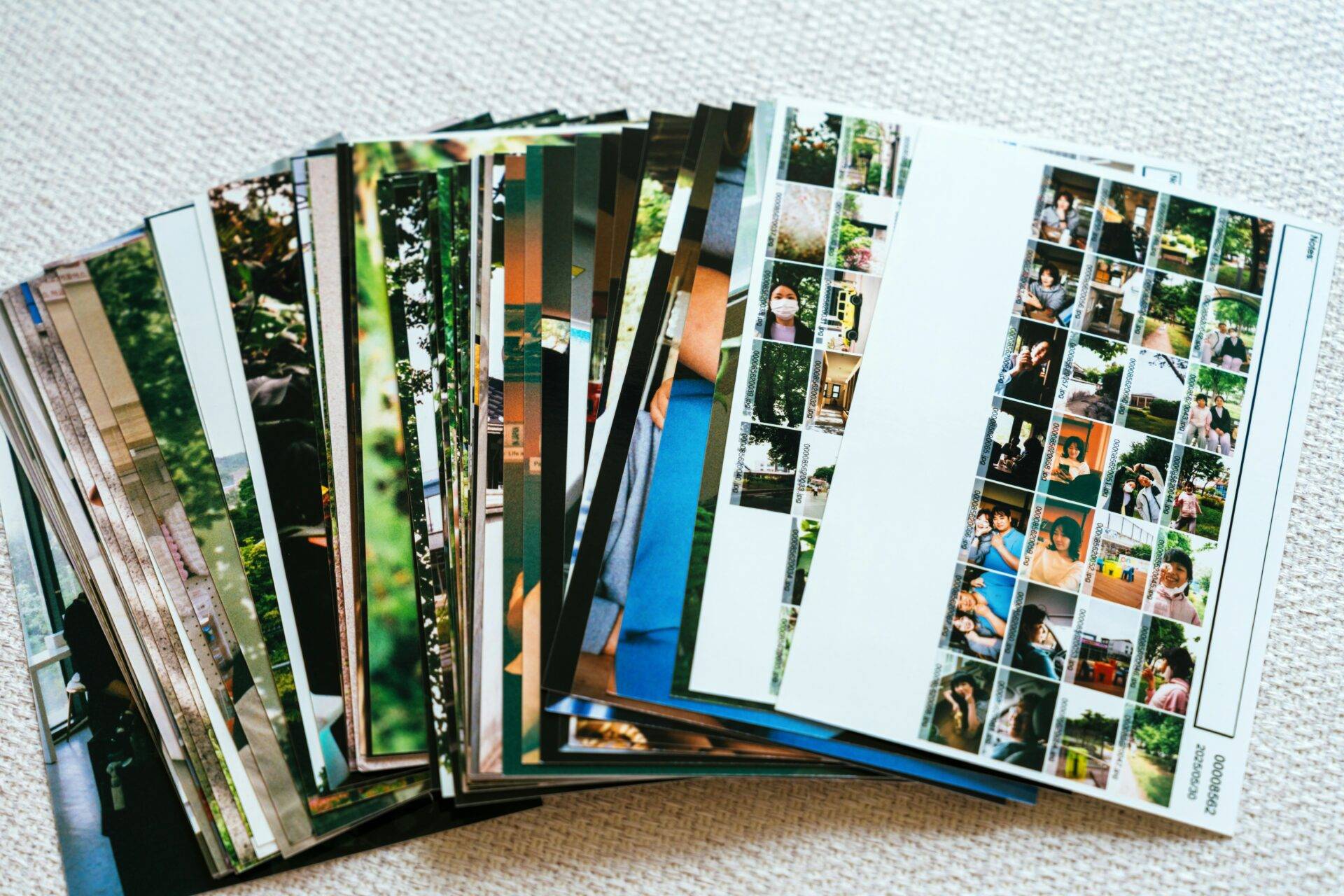When it comes to newborn photography, both parents and photographers need to have a clear understanding of the duration of a photography session. By knowing what to expect, parents can better prepare for the session, and photographers can plan accordingly. In this blog post, we will discuss the importance of understanding the duration of a newborn photography session, setting realistic expectations, and provide an overview of the topics that will be covered.
Importance of Understanding the Duration of a Newborn Photography Session
Understanding the duration of a newborn photography session is crucial for parents as it helps them to plan their schedules accordingly. Newborns require frequent feeding, changing, and soothing, so it's important to allow enough time for these tasks during the session. By knowing how long the session is expected to last, parents can ensure that their newborn is well-rested and fed before the photographer arrives.
For photographers, understanding the duration of a session allows for better time management. It helps them allocate enough time for each pose, setup, and prop change, ensuring that they can capture a variety of beautiful images without feeling rushed. By having a clear understanding of the expected duration, photographers can plan their workflow in a way that maximizes the time spent capturing adorable moments.
Setting Realistic Expectations for Parents and Photographers
Setting realistic expectations is key to a successful newborn photography session. For parents, it is important to understand that newborn photo shoots can take several hours. Newborns are unpredictable, and their needs must be prioritized during the session. By setting realistic expectations, parents can better prepare themselves mentally and physically, ensuring a smoother and more enjoyable experience for everyone involved.
Photographers also play a crucial role in setting realistic expectations. They should communicate with parents about the duration of the session and any additional factors that may affect the timing, such as breaks for feeding or changing. By being transparent about the process and potential challenges, photographers can manage expectations and ensure a positive experience for both themselves and the parents.

Factors Affecting the Duration of a Newborn Photography Session
When it comes to newborn photography sessions, there are several factors that can influence the duration of the session. Understanding these factors can help both the photographer and the parents to plan and prepare accordingly. In this article, we will discuss four key factors that can affect how long a newborn photography session may take.
Age of the Newborn
The age of the newborn is one of the most significant factors that can impact the duration of a photography session. In general, it is recommended to schedule newborn photography sessions within the first two weeks of the baby's life. During this time, newborns tend to sleep more and are more likely to cooperate during the session. As they get older, they may become more alert and less willing to be posed or wrapped, resulting in longer sessions.
Baby's Temperament
Another factor that can influence the duration of a newborn photography session is the baby's temperament. Some babies are naturally more calm and relaxed, making it easier for the photographer to pose them and capture beautiful images. On the other hand, some babies may be more fussy or have a harder time settling down, which can prolong the session. The photographer may need to spend more time soothing and comforting the baby to ensure they are calm and relaxed for the photos.
Complexity of Poses and Setups
The complexity of the poses and setups chosen for the photography session can also impact the duration. Some poses may require more time and effort to set up properly, especially if they involve props or intricate poses. Additionally, if the parents have specific requests or ideas for the session, it may take extra time to execute those ideas. It is important for the photographer to communicate with the parents beforehand to understand their preferences and plan accordingly.
Feeding and Comforting Breaks
During a newborn photography session, it is common for the baby to need feeding and comforting breaks. Babies may become hungry or unsettled during the session, and it is important to prioritize their needs and comfort. These breaks can add to the overall timeline of the session, especially if the baby takes longer to settle back into a sleepy state after feeding. It is essential for the photographer to be patient and understanding during these breaks to ensure the baby is comfortable throughout the session.
In conclusion, several factors can affect the duration of a newborn photography session. The age of the newborn, the baby's temperament, the complexity of poses and setups, and the need for feeding and comforting breaks all play a role in determining how long the session may take. By considering these factors and communicating effectively with the parents, photographers can plan and prepare for a successful and enjoyable photography session.
Typical Duration of a Newborn Photography Session
Welcome to another exciting blog post where we delve into the fascinating world of newborn photography! Today, we are going to discuss the typical duration of a newborn photography session. As parents, you might be wondering how long these sessions usually take and what factors can either lengthen or shorten the duration.
Average Length of a Newborn Session Based on Industry Standards
In general, newborn photography sessions can last anywhere from 2 to 4 hours. This duration includes the time needed for setup, feeding breaks, diaper changes, and posing the baby in various cute and adorable positions. Newborns require a lot of patience and gentleness, and it's important for the photographer to take the time needed to capture those precious moments.
During the session, the photographer will make sure your baby feels comfortable and secure, ensuring their safety is of the utmost priority. They will take breaks as needed, allowing the baby to settle and rest before moving on to the next set of poses.
It's important to remember that every baby is unique, and each session is tailored to their individual needs. Some babies may fall asleep easily and remain calm throughout the session, while others may need more time to settle and may require additional feedings or soothing techniques. The aim is to create a relaxed and stress-free environment for both the baby and parents.
Factors That Can Extend or Shorten the Session Duration
Several factors can affect the duration of a newborn photography session. Firstly, the baby's temperament plays a significant role. Some babies are naturally more laid-back and content, making it easier to move through various poses and setups quickly. On the other hand, if the baby is fussy or unsettled, the photographer may need to spend additional time soothing and comforting them, which can extend the session duration.
Another factor that can impact the duration is the number of poses and setups you'd like to include in your session. If you have specific ideas or props in mind, it's essential to communicate this with the photographer beforehand so they can plan accordingly. Keep in mind that each pose requires time for adjusting and positioning the baby safely.
The health and well-being of the baby also play a crucial role in determining the session's duration. If the baby requires extra attention due to any medical conditions or discomfort, the photographer will take the necessary breaks and make accommodations to ensure their safety and comfort throughout the session.
Importance of Flexibility and Patience During the Session
Flexibility and patience are key when it comes to newborn photography sessions. Babies can be unpredictable, and it's important to go with the flow and allow the session to unfold naturally. Sometimes, the most magical and heartwarming moments happen when the baby least expects it.
As parents, it's important to trust the photographer's expertise and experience. They know how to handle newborns and have a wide range of tricks up their sleeves to capture those beautiful shots. Remember, newborn photography is an art, and the photographer's ultimate goal is to create timeless memories for you and your family.
During the session, try to remain relaxed and enjoy the experience. Take this opportunity to bond with your baby and cherish these early moments of their life. The photographer will guide you through the poses and make sure you're comfortable throughout the session.
Preparing for a Newborn Photography Session
When it comes to capturing those precious early moments of your newborn, a photography session is a wonderful way to create lasting memories. To ensure the session goes smoothly and results in beautiful images, it's important to be well-prepared. Here are some key steps to help you get ready:
Communication with parents before the session
Before the photography session takes place, it's crucial to have clear communication with the parents. This will help in setting realistic expectations and ensure that both the photographer and the parents are on the same page. Discussing the vision and goals for the session can help create a comfortable and relaxed environment, which is essential when photographing newborns.
During this communication, the photographer can also ask the parents about any specific poses or themes they have in mind. This will allow the photographer to prepare the necessary props and equipment ahead of time, enhancing the overall experience and resulting in stunning photographs.
Providing a checklist of items to prepare in advance
Preparing for a newborn photography session involves gathering a few essential items. To make it easier for parents, the photographer can provide them with a checklist of things to prepare in advance. This checklist may include:
- Extra outfits for the baby
- Special props or blankets
- Pacifiers or other soothing items
- Feeding supplies
- Wipes and diapers
- A favorite toy or comfort item
Having these items ready and organized before the session will save time and help create a stress-free environment for both the parents and the baby.
Scheduling the session at the optimal time for the baby
Timing plays a crucial role in ensuring a successful newborn photography session. Newborns are typically sleepier and easier to pose within the first two weeks of their life. Scheduling the session during this time frame increases the chances of capturing those adorable curled-up poses that parents adore.
It's also important to consider the baby's feeding and nap schedule. Booking the session when the baby is well-rested and fed can contribute to a calmer and more cooperative photoshoot. Photographers who specialize in newborn photography often recommend scheduling the session in the morning when babies tend to be more alert and content.
In conclusion, thorough communication, a checklist of essential items, and strategic scheduling are key elements in preparing for a successful newborn photography session. By following these steps, parents can ensure a memorable and enjoyable experience, resulting in cherished photographs that capture the beauty and innocence of their precious little one.
Workflow and Time Management Tips
Every photographer knows that time is of the essence when it comes to a photoshoot session. The clock is ticking, and you want to make the most out of every moment. To help you maximize your session time, here are some efficient workflow techniques to consider:
1. Plan and Prepare
Before the session, take the time to plan and prepare accordingly. This includes scouting the location, researching poses and setups, and understanding the client's expectations. By having a clear plan in mind, you can save precious time during the actual session.
2. Organize Your Equipment
Keep your gear organized and easily accessible. Set up your equipment in a way that allows you to grab what you need quickly. This will help prevent delays and keep the session flowing smoothly. Consider using equipment organizers or bags to keep everything in its place.
3. Use a Shot List
A shot list is a great tool for keeping track of the poses and setups you want to capture. Create a checklist of the shots you need to ensure you don't miss anything. This will help you stay focused and avoid wasting time trying to remember what comes next.
4. Set Realistic Time Limits
Time management is all about setting realistic expectations. Break down your session into time blocks for different poses or setups. This will help you stay on track and avoid spending too much time on one particular shot. Remember to build in some buffer time for unexpected delays.
5. Communicate Efficiently
Clear and effective communication is key to a smooth workflow. Make sure your instructions to the model or subjects are concise and easy to understand. Avoid using complicated technical jargon that can confuse or frustrate your clients. The better you can articulate your vision, the more efficient the session will be.
6. Master Transitions
Smooth transitions between poses and setups can have a significant impact on session time. Practice transitioning between different poses and setups to ensure they flow seamlessly. This will reduce the need for constant adjustments and repositioning, ultimately saving you time.
7. Delegate When Possible
Having an assistant or spotter can greatly enhance both safety and efficiency during a photoshoot. An assistant can help with equipment setup, keeping track of time, and making sure every detail is in place. They can also help with lighting adjustments, holding props, and ensuring the subject's comfort. Having someone who understands your workflow can save you valuable time during the session.
By implementing these efficient workflow techniques, you can maximize your session time and achieve better results. Remember, good time management is crucial for a successful photoshoot, and with practice, you can become a master at it!
Managing Unexpected Situations and Challenges
Dealing with a fussy or uncooperative baby during the session can be a challenge for any photographer. Babies are unpredictable, and they can become fussy or cranky for various reasons. It could be because they are tired, hungry, uncomfortable, or simply not in the mood for a photoshoot. As a photographer, it is essential to be prepared and have strategies in place to handle such situations.
To begin with, it is crucial to create a comfortable and soothing environment for the baby. This can be done by ensuring that the room temperature is appropriate, using soft and cozy blankets or wraps, and playing gentle music to calm the baby. It is also helpful to keep familiar objects, such as a favorite toy or blanket, nearby to provide a sense of security.
Patience is key when dealing with a fussy baby. It is important to take breaks when needed and allow the baby to settle down. Sometimes, all it takes is a little time for the baby to relax and become more cooperative. It is also helpful to have the parents or a familiar person present during the session. Babies often feel more comfortable and secure when they are around someone they know.
Addressing diaper changes, feeding breaks, and other interruptions is another aspect of managing unexpected situations during a baby photoshoot. Babies have their own schedules and needs that must be attended to. It is crucial to communicate with the parents beforehand and plan for breaks during the session. This will ensure that the baby remains comfortable and content throughout the photoshoot.
Having a designated area for diaper changes and feeding breaks is essential. It should be equipped with all the necessary supplies, such as diapers, wipes, bottles, and burp cloths. This will help to minimize interruptions and ensure a smooth flow of the session. It is also important to be flexible and patient when it comes to such interruptions. Babies often need breaks to rest, eat, or have their diapers changed, and it is part of the natural process.
Strategies for capturing beautiful images even in less than ideal circumstances is a skill that every photographer must develop. Some situations may not be ideal, such as low light conditions, a messy background, or a cranky baby. However, with the right techniques and creativity, stunning images can still be captured.
When dealing with low light conditions, it is important to use the available light to the best advantage. This can be done by positioning the baby near a window or using natural light sources. Additionally, adjusting the camera settings to optimize the available light and using a wide aperture can help to capture sharp and well-exposed images.
A messy background can be distracting in a photograph. To overcome this challenge, it is important to choose a clean and uncluttered area for the photoshoot. If this is not possible, using props or selective focusing can help to draw attention away from the background. Remember, the focus should always be on the baby, and the background should complement rather than overpower the image.
Capturing a beautiful image of a fussy or uncooperative baby requires creativity and patience. It is important to observe the baby closely and anticipate their movements. Being ready to capture fleeting moments of joy or curiosity can result in stunning and candid photographs. Embracing imperfections and unique expressions can create memorable images that reflect the baby's personality.
Post-Processing and Delivery Timeline
When it comes to professional photography, the work doesn't end after the photo shoot. In fact, the post-processing stage is just as important, if not more, than capturing the images. This is where the magic happens, where the raw photos are edited and retouched to enhance their quality and bring out their true beauty. In this blog post, we will take a closer look at the post-processing and delivery timeline, and discuss how to set realistic expectations for the final image delivery.
Overview of the time required for editing and retouching
Post-processing involves various tasks, such as importing and organizing photos, color correction, exposure adjustments, cropping, retouching, and more. The amount of time required for editing and retouching depends on several factors, including the complexity of the shoot, the number of photos to be processed, and the level of editing required. On average, it can take anywhere from a few hours to several days to complete the post-processing stage.
It's important to note that the time required for editing and retouching may vary from photographer to photographer. Each photographer has their own workflow and editing style, which can affect the overall time frame. That being said, it's crucial for photographers to allocate enough time for post-processing to ensure that the final images meet the high standards expected by clients.
Setting realistic expectations for the delivery of the final images
When working with clients, it's essential to set realistic expectations regarding the delivery of the final images. This means providing clients with a clear understanding of the post-processing timeline and managing their expectations accordingly. By educating clients about the time and effort required for editing and retouching, you can avoid any disappointments or misunderstandings later on.
One effective way to set realistic expectations is by including a clause in your photography contract that outlines the estimated turnaround time for delivering the final images. This gives clients a clear idea of when they can expect to receive their photos and helps manage their anticipation. It's crucial to be transparent and honest about the post-processing timeline to maintain a good client-photographer relationship.
Communicating the post-processing timeline with clients
Communication is key when it comes to managing clients' expectations. As soon as the shoot is over, take the time to discuss the post-processing timeline with your clients. Explain the steps involved in editing and retouching and provide an estimated timeframe for the completion of the process. This gives clients an idea of when they can expect to receive their final images.
During the post-processing stage, keep your clients updated on the progress. If you encounter any unexpected delays due to unforeseen circumstances, it's important to communicate this to your clients as soon as possible. By being proactive in your communication, you can help ease any anxiety or impatience they may have and reaffirm your commitment to delivering high-quality results.
Post-processing is an essential part of professional photography. It involves editing and retouching the raw photos to enhance their quality. The time required for post-processing varies depending on the complexity of the shoot and the level of editing needed. It's important to set realistic expectations for the delivery of the final images by communicating the post-processing timeline with clients and keeping them updated on the progress. By being transparent and proactive in your communication, you can ensure client satisfaction and maintain a good business relationship.
Wrapping Up
Understanding the duration of a newborn photography session is crucial for both parents and photographers. By setting realistic expectations and being prepared for various factors that can affect the session's length, parents can ensure a smoother and more enjoyable experience. Photographers, on the other hand, can better manage their time and workflow by knowing what to expect.
Factors such as the age of the newborn, baby's temperament, complexity of poses and setups, and feeding or comforting breaks can all impact the duration of a session. It's important for both parents and photographers to communicate effectively and be flexible during these sessions.
By following industry standards, newborn photography sessions typically last 2 to 4 hours. However, it's important to remember that every baby is unique, so flexibility is key. Patience and understanding are essential when dealing with unexpected situations or challenges that may arise during a photoshoot.
Preparing in advance by communicating with parents about their vision for the session, providing them with a checklist of items to prepare, and scheduling at an optimal time for the baby can help ensure a successful photoshoot.
Efficient workflow techniques such as planning ahead, organizing equipment, using shot lists, setting realistic time limits, communicating efficiently with clients/models/subjects), mastering transitions between poses/setups when possible), delegating tasks if necessary) can help photographers make the most out of their session time.
Managing unexpected situations or challenges requires preparation beforehand (creating comfortable environment for baby/familiar objects nearby), patience during fussy moments/breaks needed), creativity in capturing beautiful images even in less than ideal circumstances (using available light effectively/adjusting camera settings accordingly).
Post-processing plays an important role in delivering high-quality final images. The time required for editing and retouching varies depending on several factors but should be communicated clearly to clients from the beginning. Setting realistic expectations regarding delivery timelines helps manage client anticipation while maintaining transparency throughout the process.
By effectively managing time during the photoshoot, communicating with clients, and delivering high-quality images in a timely manner, photographers can ensure client satisfaction and build strong relationships. Newborn photography sessions are special moments that capture the innocence and beauty of a newborn's early days, and by understanding the duration and preparing accordingly, these moments can be cherished for a lifetime.




